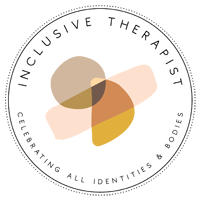If you’ve ever felt unsure how to fully show up in therapy — or even whether it’s safe to — you’re not alone. For many of us, especially those who carry trauma, the idea of feeling safe with another person and with ourselves can feel really out of reach.
In trauma therapy, we don’t rush into deep healing work. We start with something more foundational: safety. Not just intellectually knowing you’re safe — but a felt sense of “I can breathe here. I can let my shoulders down here.”
Safety in therapy has two parts: the kind that’s built in the environment around you (external), and the kind that slowly grows inside you (internal). Both are important. And both take time.
What Is External Safety in Trauma Therapy?
External safety is about the conditions that surround you in therapy — the structure, rhythm, and relationship that tell your nervous system, “You don’t have to brace yourself right now.”
This might look like:
- A therapist who shows up consistently with warmth, clarity, and respect.
- Clear boundaries, gentle pacing, and open communication about what happens in a session.
- A space — even a virtual one — that feels calming, steady, and nonjudgmental.
- Knowing you’ll never be pushed too far or too fast.
In short, you get to be a full human here — as you are — and nothing bad will happen because of it.
When that kind of external safety is present, your system can start to soften. It might feel subtle at first, like an exhale you didn’t know you were holding. But that subtle moment matters and is something to build on as it opens the door to deeper healing.
How Internal Safety Develops in Trauma Therapy
Internal safety is the kind you carry within you — the sense that it’s okay to feel what you feel, and that you won’t abandon yourself when things get hard.
This kind of safety looks like:
- Starting to notice your emotions and body sensations with curiosity, not fear.
- Feeling your “no” and honoring it — even in therapy.
- Learning that you don’t have to leave yourself when things get uncomfortable.
- Reconnecting with parts of you that learned to protect you by disconnecting, staying silent, or recklessly pushing through.
For many of us, internal safety doesn’t come easily and might feel foreign at first. But with support — and at your pace — you can start to rebuild trust in yourself. One breath, one moment at a time.
In my practice, we often use somatic work and parts work (like Internal Family Systems) to help with this. It’s not about getting rid of defenses. It’s about honoring the wisdom in them, and gently making room for something new.
Why Safety in Therapy Matters — So Much
Sometimes we come to therapy thinking the real work will begin when we start talking about “the hard stuff.” But the truth is, for trauma survivors, the real work begins when safety starts to take root.
Not just talking about safety — but feeling it. In your body. In the space. In the relationship.
Because here’s the thing: healing can’t happen in a state of survival. If your nervous system is still bracing for impact, still waiting for the next shoe to drop, it won’t matter how much insight you gain — it won’t land. It won’t stick.
That’s why safety isn’t just a warm-up or a step we rush through — it’s the ground we return to again and again. It’s what makes all the deeper work possible.
When there’s enough external safety (predictability, trust, clear boundaries), your body can begin to let go of its grip. And when internal safety starts to grow (the capacity to stay with your own experience), you begin to feel more whole — more like yourself — even in the hard moments.
This doesn’t mean things get easy overnight. But it does mean you don’t have to keep abandoning yourself to get through life. You begin to feel the difference between surviving and actually being here — present, connected, and alive.
That’s why safety matters so much. It changes the terms of your life — not just in therapy, but everywhere.
Building Safety Is a Process — And That’s Okay
Safety isn’t a box to check. It’s something we return to, rebuild, and renegotiate — especially when life throws us off center. Some days, you’ll feel more grounded. Other days, less so. That’s not a setback. That’s part of being human.
In therapy, we don’t expect you to come in knowing how to feel safe. We build that together.
You get to:
- Speak up when something feels off.
- Take your time.
- Choose what’s right for you — even if it changes week to week.
We go slow. We listen. We co-create a space where your nervous system can begin to feel what it may never have had before: you’re safe enough to be all of you here.
If that kind of therapy feels new, good. It should. You deserve a space where safety isn’t assumed — it’s built with care, together.
Learn More
If you’re interested in learning more about trauma healing, we invite you to visit one of our many informative therapy pages here: Trauma Therapy, CBT Therapy, Self-Reclamation Therapy, IFS Therapy, Somatic Therapy, and more!













